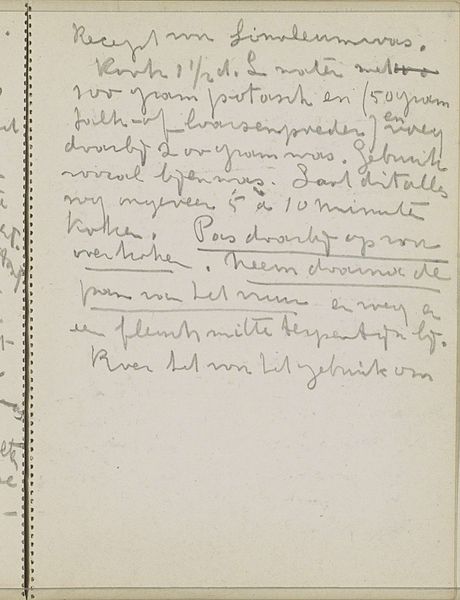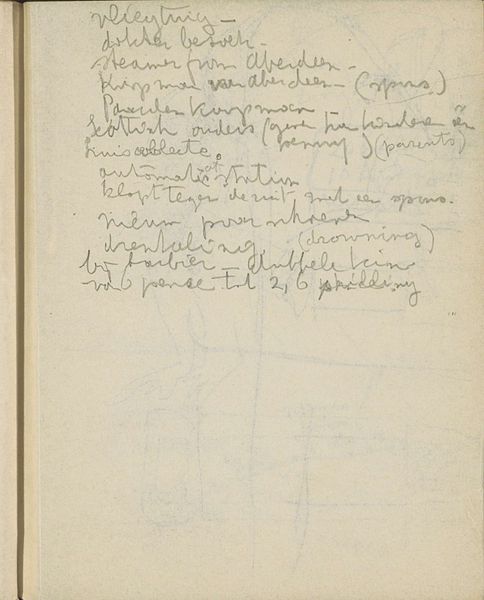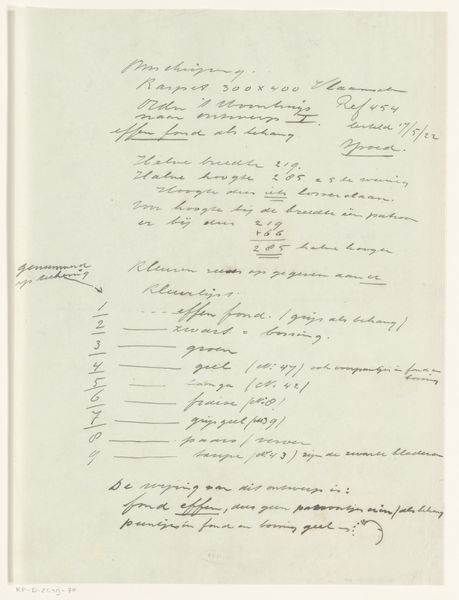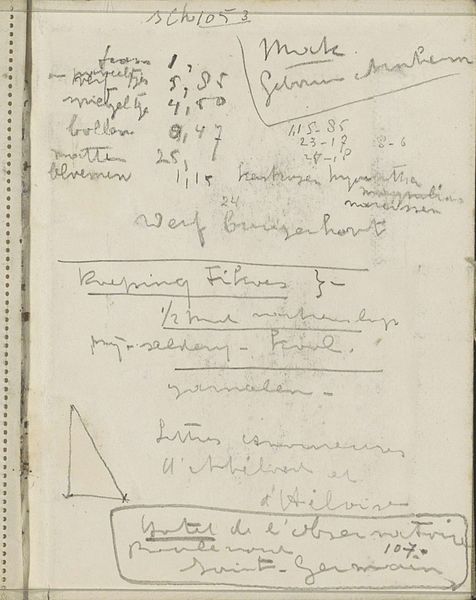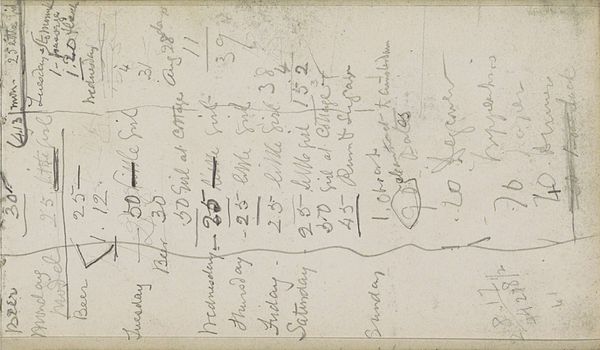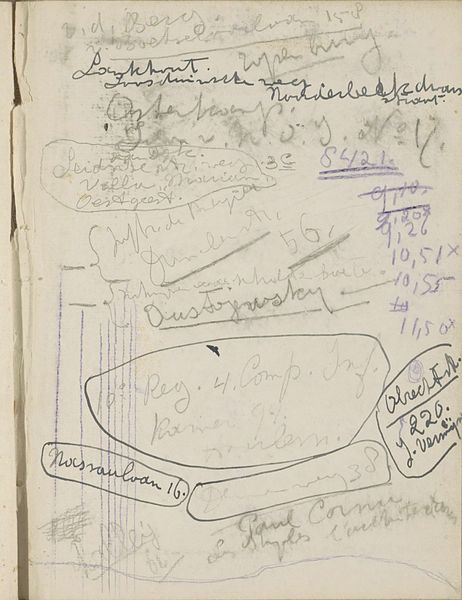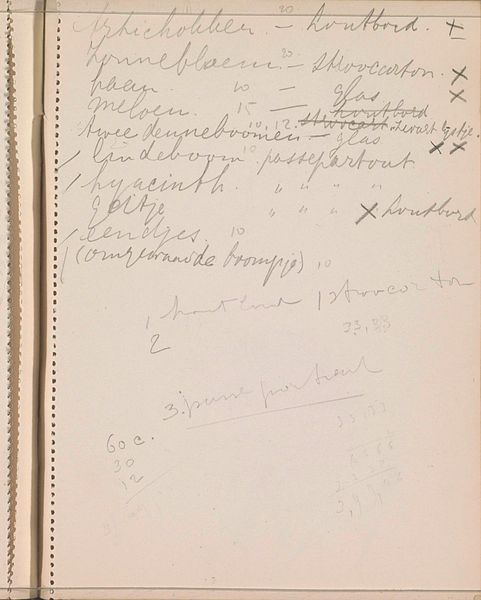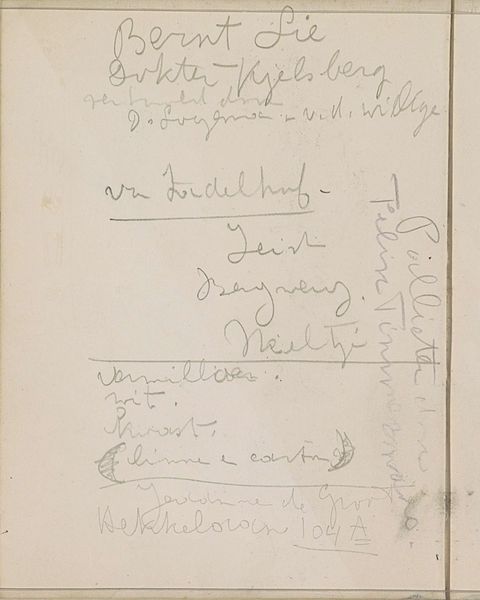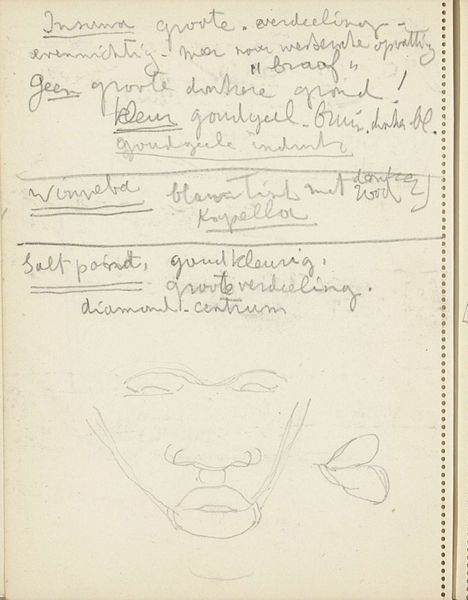
drawing, graphic-art, paper, pencil
#
drawing
#
graphic-art
#
comic strip sketch
#
hand written
#
hand-lettering
#
hand drawn type
#
hand lettering
#
paper
#
personal sketchbook
#
hand-written
#
hand-drawn typeface
#
geometric
#
pencil
#
abstraction
#
handwritten font
#
modernism
#
small lettering
Copyright: Rijks Museum: Open Domain
Editor: This is "Decorative Patterns" by Reijer Stolk, likely created sometime between 1916 and 1945. It's a pencil drawing on paper, and feels like a peek inside an artist's mind – almost stream of consciousness. There’s handwritten notes alongside geometric shapes, patterns, and color notations. How do you read a piece like this, with such varied information presented together? Curator: Well, consider this a document of artistic labor. What we see isn’t a finished “artwork” in the traditional sense, but rather evidence of Stolk’s process. Look at the materiality of the work. We see the immediate trace of the artist's hand through pencil marks. These are humble materials, indicative perhaps, of resource limitations given the probable time frame this piece was made, particularly amid war shortages. How do these elements affect your perception? Editor: It definitely humanizes the art-making. Seeing the calculations and material considerations removes some of the mystique. It almost feels more honest, more about problem-solving. Curator: Exactly. It blurs the boundaries between the "high art" of a finished painting and the functional nature of design or craft. It raises questions about the social role of art, where even preparatory sketches on paper reflect labor and resource management within a specific cultural context. The repetitive nature of patterns being designed brings the subject of production to the foreground. Editor: So, it's less about the aesthetic beauty and more about the means of creating something aesthetically pleasing, and the realities that come with that? Curator: Precisely. We're examining the tangible elements and understanding their connection to the artist's work. Does understanding this approach influence how you now see similar works? Editor: Absolutely. I'll be looking beyond just the finished image now, trying to find clues about the artistic process, the materials used, and the context it was all created in. Thank you for that perspective!
Comments
No comments
Be the first to comment and join the conversation on the ultimate creative platform.

